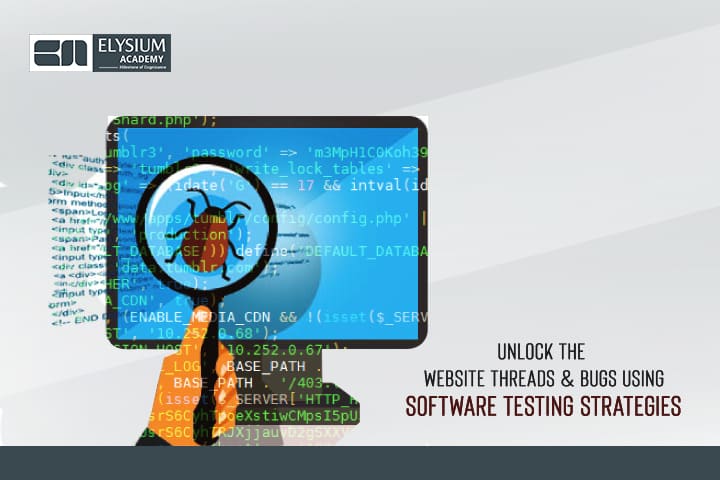Software Testing Strategies: Software Testing is a process to evaluate the functionalities of the software applications with intent to finding the development of software requirements or else to identify the defects to ensure the product is defect free in order to produce the quality product.
Principles of Software Testing Strategies
1. Exhaustive Testing is not Possible
We know that exhaustive testing is not possible. At the same time, we need the optimal amount of testing based on the risk assessment of the application. So, if you are testing this operating system you will realize that the defects are consists of multi-tasking activity and need to testing thoroughly which it brings us to the text principle defect clustering.
2. Defect Clustering
In this defect clustering which the states that consist of a minimum number of modules. Most of the defects are detected. The applications of Pareto principles to software testing. Whether approximately 80% of the problems may found in 20% of the modules. To repeat the same test again and again, the same test cases may no longer find the new bugs.
3. Pesticide Paradox
Repetitive use of the same pesticide mix into eradicating insects during the farming will over time leads to the insects improving resistance to the pesticide. It is ineffective for pesticides on insects. The same set of repetitive tests are conducted in which its methods may useless for discovering new defects in Big Data Trends.
4. Testing Shows a Presence of Defects
In order to, the testing principles states that the presence of facts and the absence of defects. Software testing reducing the probability of discovering the defects remaining the software but there is no defects are found it is not proof of correctness.
5. Absence of Error
It is possible that the software which is 99% of bug-free is still unusable. In this case, the system is tested thoroughly for the invalid requirements in Web Application. This process is not merely to find the defects but also to check the software addressing the business needs. Both fixing and finding the defects may help to system build is unusable and it does not fulfill the user’s requirements and needs.
6. Early Testing
The early testing must start as early as possible in the software development life cycle. It is cheaper to fix a defect in the early stages of testing. It is recommended to begin finding the bug moment requirements are defined.
7. Testing is Context Dependent
Testing is context dependent which it is basically present in the way you test an e-commerce site will be several from the way you test the commercial off of the shelf applications. For instant testing, any POS systems are retailing the store that will different than the testing an ATM Machine.
Why software testing is necessary?
There is a various reason which it clearly tells us why Software Testing is essential and what are the main things that we should consider while testing the application or product. In this software testing is huge essential because of the following reasons: Software testing strategies is required at the point of defecting the errors that were made during the development phases.
- It is important since it makes sure the customer’s reliability and satisfaction in the application.
- It is hugely essential to enrich the quality of the product. At the same time, the quality product delivering the customers helps in gaining their confidence.
- Particularly, testing is important in order to provide the facilities to the customers. To deliver the high-quality product or else software application which it is requiring the low maintenance cost.
- At the same time, testing is will require for the effective performance of software application or else product.
- It is important to enhance that the application should not result in any failures because it will expensive in the future or in the later stages of the development.
- It is essential to stay in all the business.












